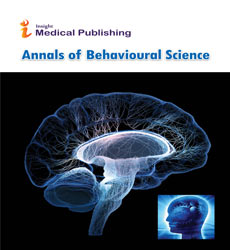Role of Anthocyanins in the Prevention and Treatment of Brain Disorders
Mohammad Chin
Mohammad Chin*
Department of Psychotherapy, Tohoku University, Sendai, Turkey
- *Corresponding Author:
- Mohammad Chin
Department of Psychotherapy
Tohoku University
Sendai, Turkey
E-mail: mahammad.chin@gmail.com
Received Date: November 03, 2021; Accepted Date: November 17, 2021; Published Date: November 24, 2021
Citation: Chin M (2021) Role of Anthocyanins in the Prevention and Treatment of Brain Disorders. Ann Behav Sci Vol.7 No.3:e001.
Editorial Note
Anthocyanins are natural polyphenols commonly found in fruits and vegetables. Many studies state that foods rich in anthocyanins can play an important role in the prevention and treatment of various pathological conditions that promote their consumption worldwide. Anthocyanins play an important neuroprotective role, primarily due to their recognized antioxidant and anti-inflammatory properties. Neuroinflammation is a complex process associated with both homeostasis and pathological conditions. The fight against brain inflammation in these diseases has been regarded as a promising strategy, as the progression of some neurological disorders is based on the neuroinflammation process. Recent data show the anti-neuroinflammation capacity of many anthocyanins and their metabolites in the development and development of some neuropathy. Here discusses the importance and applicability of these polyphenolic compounds as neuroprotective agents and explores the molecular mechanisms underlying the regulation of neuroinflammation by these natural compounds associated with a variety of brain diseases.
Fruits and vegetables are important sources of nutrients such as minerals, vitamins, polyphenols and fibre, and have several related benefits in the prevention and alleviation of various chronic diseases. Many of these benefits are associated with antioxidant, anti-inflammatory, antibacterial, and anticarcinogenic effects mediated by the polyphenol compounds found in these foods. In recent years, especially in Western Europe, the regular and high intake of polyphenol-rich foods has been promoted. In fact, berry extracts show significant health benefits primarily due to a particular group of polyphenols called anthocyanins.
Anthocyanins are a large subclass of flavonoids commonly found in fruits and vegetables in the human diet. Among flavonoids, anthocyanins are becoming more important due to their high intake to humans and their generally recognized antioxidant and anti-inflammatory effects, and certain pathological conditions such as cardiovascular disease. Despite much evidence that anthocyanins have the ability to enter the circulation and exert their effects in peripheral tissues, this question remains controversial and is further discussed.
Globally, people are facing an ever-increasing life expectancy, primarily due to technological and medical advances in providing innovative approaches in prevention and life support therapy. As a result, a significant increase in the prevalence of age-related diseases has been reported, and neurodegenerative diseases are one of the major challenges facing modern medical systems without effective treatment. All brain disorders include impaired biological processes such as immunity and antioxidants. These processes are believed to underlie the triggers of certain diseases and facilitate the study of their unique pathways and mechanisms. Conveniently, anthocyanins act as potential antioxidant compounds by removing free radicals and contributing to an increase in endogenous antioxidants and decrease in the formation of endogenous Reactive Oxygen Species (ROS). In addition, evidence is that anthocyanin regulates nerve cell death pathways, regulates mitochondrial function, and inhibits protein aggregation, along with the ability to prevent excitotoxicity-induced nerve cell death by maintaining calcium homeostasis. It shows that autophagy can be enhanced. In addition to these mechanisms of action, anthocyanins appear to have a positive impact on neuroinflammation, an important biological process involved in the progression of various brain disorders. The current overview collects more recent data on the neuroprotective effects of anthocyanins in neurological disorders and focuses on the role of these polyphenolic compounds in anti-neuroinflammation.
Open Access Journals
- Aquaculture & Veterinary Science
- Chemistry & Chemical Sciences
- Clinical Sciences
- Engineering
- General Science
- Genetics & Molecular Biology
- Health Care & Nursing
- Immunology & Microbiology
- Materials Science
- Mathematics & Physics
- Medical Sciences
- Neurology & Psychiatry
- Oncology & Cancer Science
- Pharmaceutical Sciences
